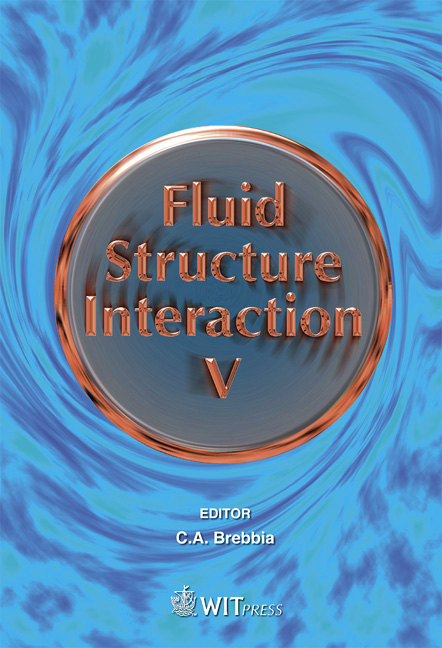Numerical And Experimental Investigation On A Maritime Radar Scanner
Price
Free (open access)
Transaction
Volume
105
Pages
10
Page Range
313 - 322
Published
2009
Size
1,000 kb
Paper DOI
10.2495/FSI090291
Copyright
WIT Press
Author(s)
S. Muggiasca, F. Ripamonti, D. Rocchi & A. Zasso
Abstract
This paper presents the study of the aerodynamic behaviour of a standard radar scanner used for maritime applications. The radar scanner is a bluff body more than 2 m long that, during its operating conditions, rotates under relative wind. The requirements for good radar performances are an almost constant angular velocity under different wind conditions, and the capability to start from rest under strong wind, with a consequent large dimensioning torque and power of the motor. An experimental campaign and a numerical study have been carried out in order to better understand the flow-structure interaction. Experimental tests were performed at Politecnico di Milano wind tunnel on the radar scanner in full scale both in static and in dynamic conditions. During static tests the aerodynamic forces on the radar scanner have been measured changing the wind angle of attack. The dynamic tests have been carried out using the electric motor and the gearbox normally used to move the radar. Critical operating conditions have been reproduced driving the radar to rotate under strong wind velocity and measuring the motor torque and the radar angular velocity. Both the tests pointed out a very high aerodynamic moment opposing the radar rotation, thereby reducing its velocity to point of stopping it. In order to better understand how the radar interacts with the flow, 3D CFD analysis has been carried out comparing the results against the experimental data. Keywords: radar aerodynamic coefficients, wind tunnel tests, CFD analysis. 1 Introduction The dynamic behaviour of radar antennas is strongly affected by the fluidstructure interaction between the relative wind and the bluff body dynamics of
Keywords
radar aerodynamic coefficients, wind tunnel tests, CFD analysis.





